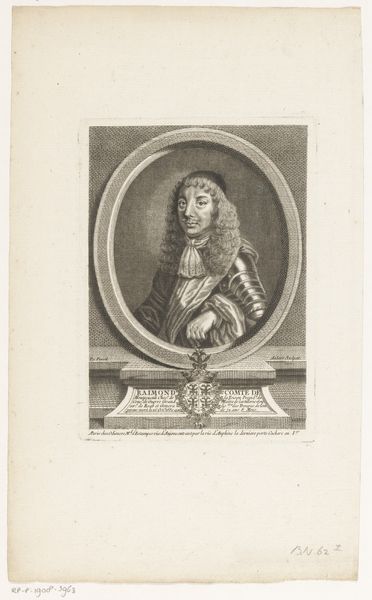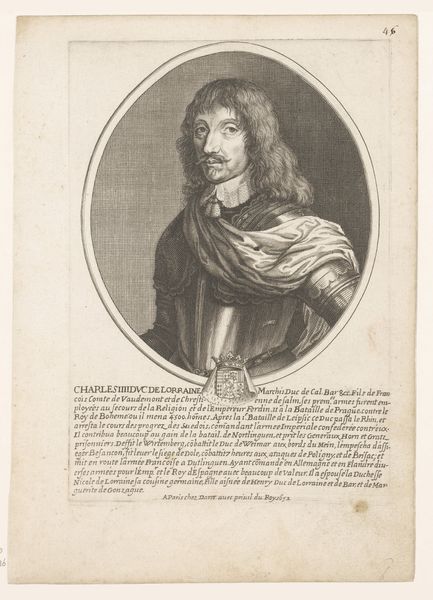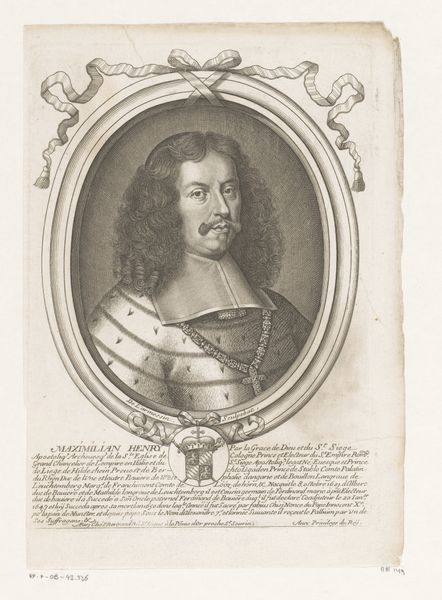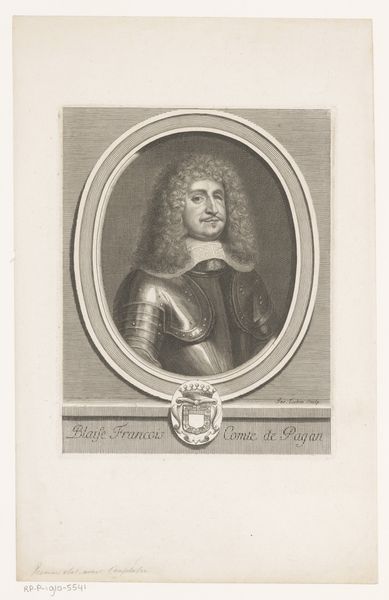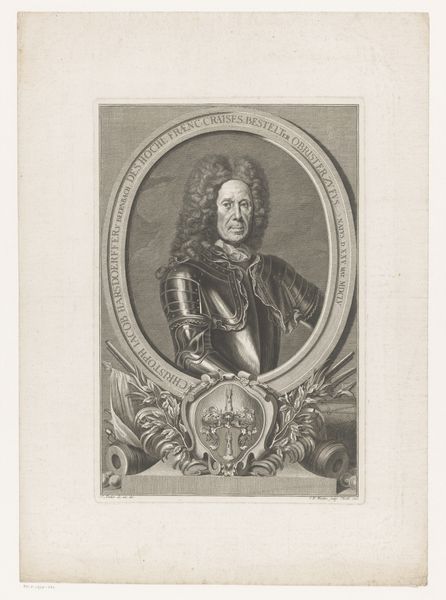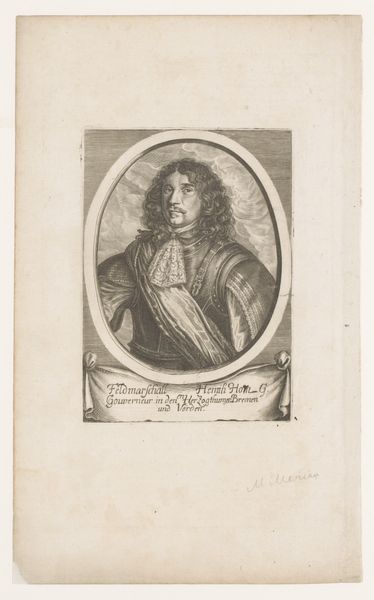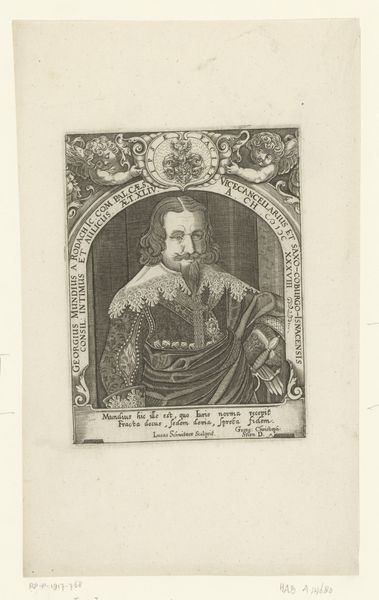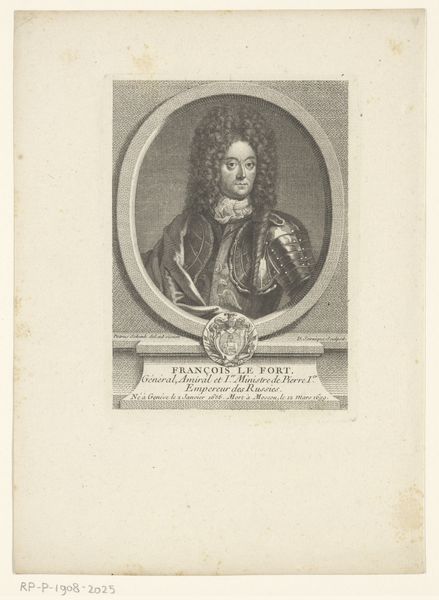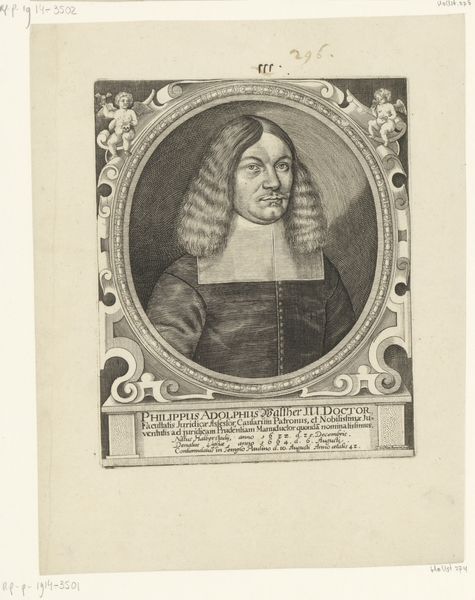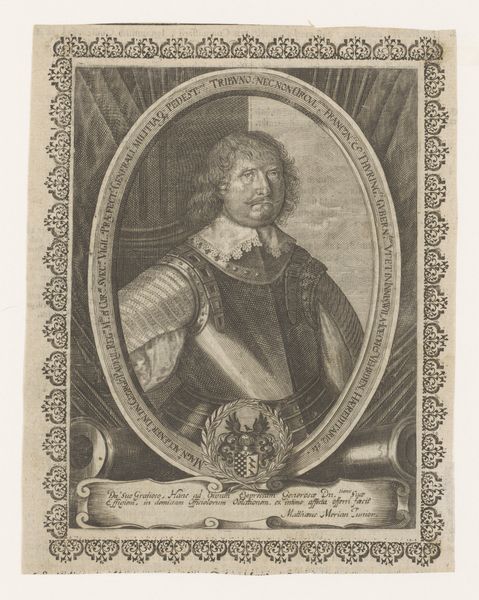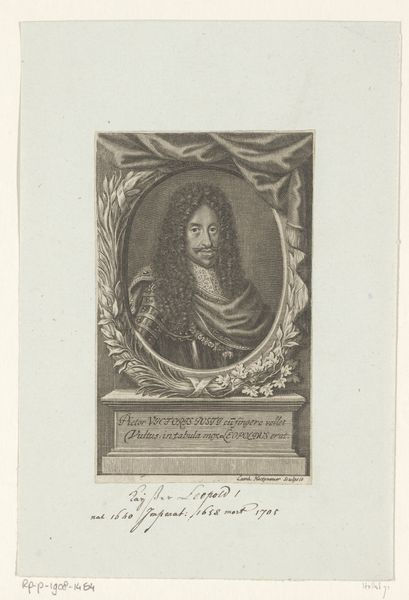
print, engraving
#
portrait
#
baroque
# print
#
old engraving style
#
history-painting
#
engraving
Dimensions: height 165 mm, width 113 mm
Copyright: Rijks Museum: Open Domain
Curator: This engraving is a portrait of Philipp Florinus von Pfalz-Sulzbach, created sometime between 1655 and 1672 by Matthias van Sommer. It exemplifies the Baroque style and history-painting themes so prevalent during that era. Editor: My first impression? A stern, almost theatrical presentation. There's a sort of controlled intensity in his gaze, coupled with that ornate armor. It feels very performative, wouldn't you say? Curator: Absolutely. Baroque portraiture often served to project power and status. The armor, the framing oval, even the Latin inscription, all work together to construct a very specific image of authority. The engraver meticulously captures textures—metal against skin, hair, it reinforces social hierarchies of the time. Editor: The light is interesting, isn't it? Stark highlights creating deep shadows. The artist seems intent on revealing the details of his subject, which I find somehow endearing. What could his face tell if only he could drop his posing? I imagine him sitting awkwardly. Curator: His attire would have spoken volumes to contemporary viewers. Armor signified military prowess, a noble lineage ready to defend the realm. It's less about personal comfort and more about public image, a visualization of power in a period defined by frequent political unrest. I wonder how his identity, class and gender factored into the creative process? Editor: Exactly! The societal weight each element of the artwork carries is evident in the care taken. It speaks of an aspiration, perhaps. A dream crafted by many tiny lines of labor on this surface. The artist's technical skills are striking. But there's always such control. Curator: Right, engravings themselves represent a certain democratization of images. Prints made art and information more accessible. The distribution also further entrenches this specific, controlled depiction of a man from an elite social stratum, for whom the power and position were likely inherent to his inherited circumstances. Editor: Thanks for pointing that out. Makes one reflect on whose stories get told and preserved, right? Ultimately this one's more layered and thought-provoking than I had thought. Curator: I concur; that kind of intersectional thinking helps me situate the art.
Comments
No comments
Be the first to comment and join the conversation on the ultimate creative platform.
